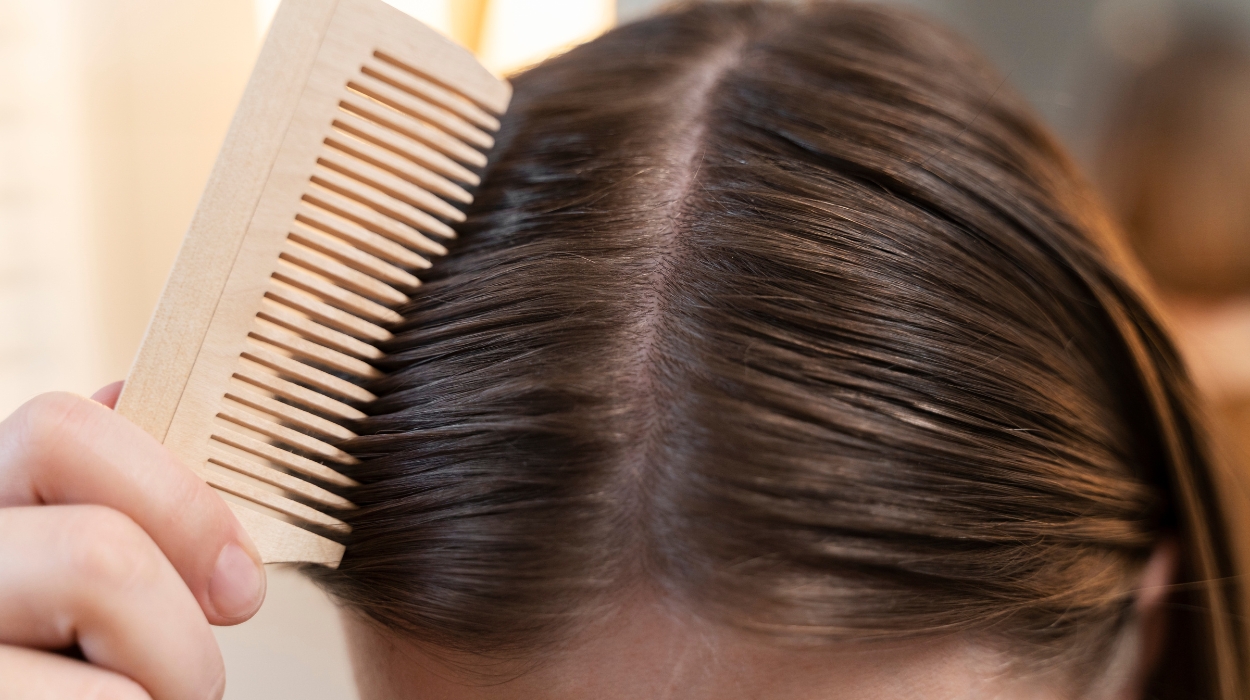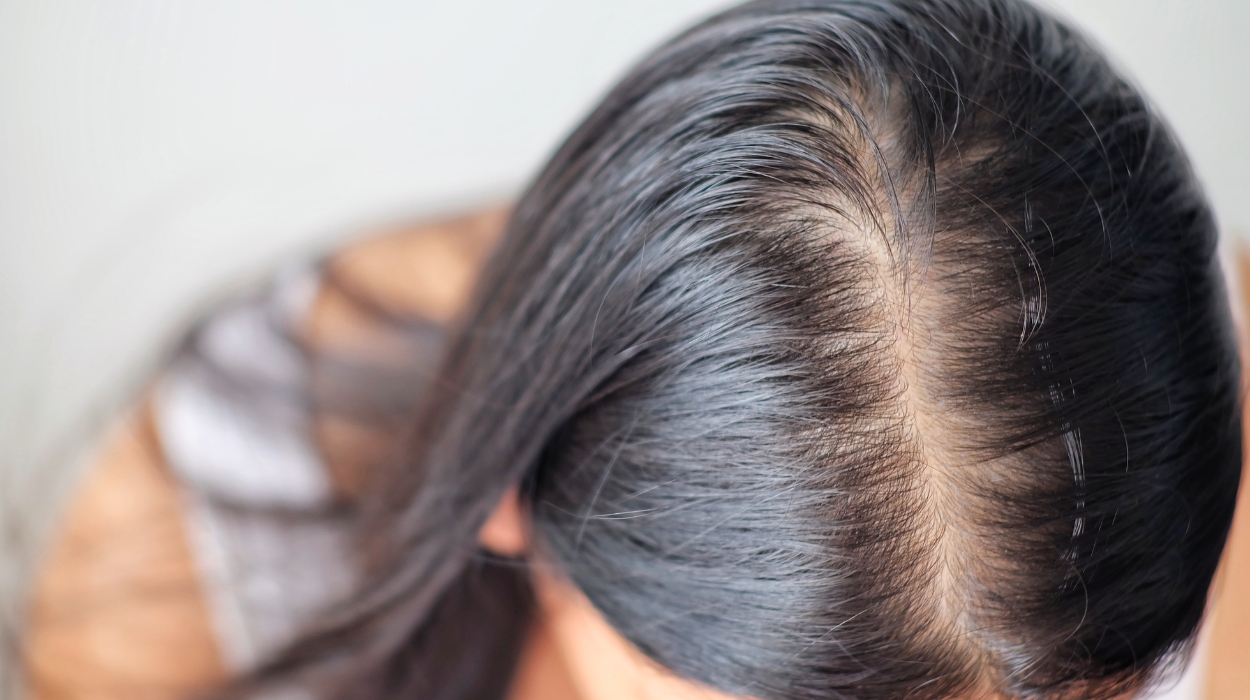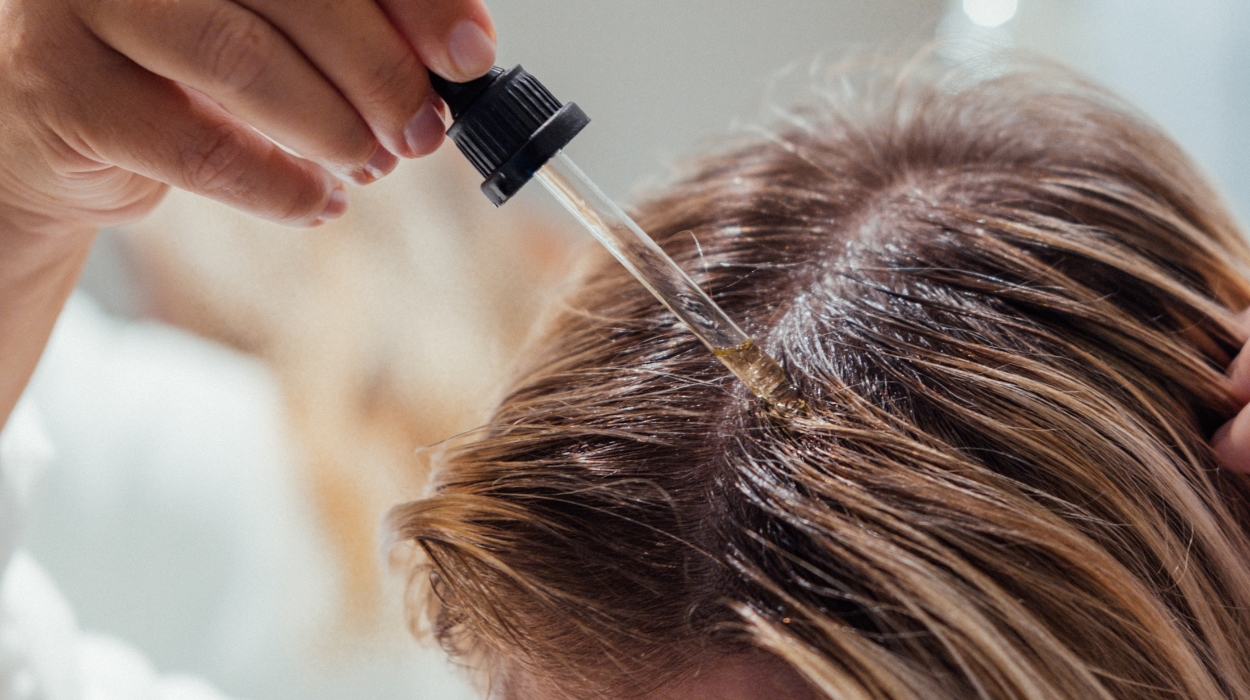 Expert's opinion
Expert's opinion
Expert's opinion
The article is a subjective view on this topic written by writers specializing in medical writing.
It may reflect on a personal journey surrounding struggles with an illness or medical condition, involve product comparisons, diet considerations, or other health-related opinions.
Although the view is entirely that of the writer, it is based on academic experiences and scientific research they have conducted; it is fact-checked by a team of degreed medical experts, and validated by sources attached to the article.
The numbers in parenthesis (1,2,3) will take you to clickable links to related scientific papers.
Hair Breakage At Crown: Causes And Treatment Tips In 2024

Are you experiencing hair breakage at the crown of your head? Don’t let broken strands dampen your confidence.
Hair breakage is a common concern that can leave your hair dry, frizzy, and dull. Styling your hair can also be challenging, as breakage leaves your hair looking limp and thin. Luckily, the proper knowledge and targeted care can address this issue head-on.
Let’s discuss the causes of hair loss at the crown. We’ll provide you with the best to combat and prevent breakages, like deep conditioning treatments and natural hair growth oils. Read on to take the first step towards a healthy, voluminous mane.
Hair Breaking Off At Crown: Things To Know
- Hair breakage at the crown refers to weakened and damaged hair strands in the top area of the head.
- It can occur due to tight hairstyles, excessive heat styling, chemical damage, poor nutrition, genetics, or certain health conditions.
- Proper care, gentle styling, and nourishment are essential to prevent and fix hair breakage in this area.
What Is Hair Breakage At Crown?

There are several telltale signs that your hair is breaking at the crown. First, you may notice shorter, frizzy strands sticking out around the top of your head. Unruly flyaways can be pesky, making it difficult to achieve the smooth, polished hairstyle you desire.
Another indicator of hair thinning at the crown is the appearance of split ends. Take a closer look at the ends of your hair. If you spot split or hair stands that seem to break off into multiple sections, it’s a sign that breakage is happening.
Pay attention to the texture of your hair as well. If your hair feels rough, dry, or brittle at the crown, chances are breakage is occurring. You might also experience increased hair shedding, finding more hair in your brush or the shower drain than usual.
Finally, look for noticeable changes in volume or thickness around the crown area. If your hair feels thinner or less voluminous, specifically at the crown, you may be experiencing significant breakage. Look for thinning or balding spots. Scalp soreness could also signify too much pressure on your hair follicles.
While these signs might not be exclusive to crown breakage, they are all good signs you need to strengthen hair with some extra TLC and a better hair care routine.
The Causes Of Hair Breaking At The Crown
Many wonder why my hair is breaking at the crown. Here are some common causes that leave your hair feeling weak and damaged:
Tight Hairstyles
Tight hairstyles may look sleek and stylish, but they can wreak havoc on your hair strands. Pulling your hair back into a ponytail, bun, or braid creates tension on the hair follicles that causes breakage. The constant strain weakens the hair shaft, leaving it more prone to splitting or snapping. Additionally, friction from tight hairstyles can impact the hair cuticle, causing further damage.
Insufficient Moisture
Moisture is the lifeblood of healthy hair, and insufficient hydration can be a major culprit behind hair breakage. When your hair lacks moisture, it becomes dry and brittle, making it more prone to damage. The hair shaft loses its elasticity without proper hydration,[1] making it more susceptible to splitting or snapping. Deep condition hair to add moisture and use oils and leave-in products that restore moisture balance and strengthen strands.
Excessive Heat Exposure
Excessive heat exposure is another notorious culprit when it comes to hair breakage. Subjecting your hair to high temperatures from heat styling tools like flat irons, curling irons, and blow dryers strips away moisture, leaving your hair dry and fragile. Too much heat also weakens the hair’s protein structure,[2] causing it to become more brittle.
Chemical Damage
Chemical treatments like coloring, perming, relaxing, or straightening your hair alter the structure, making it more susceptible to breakage. Hair products in these processes strip away the hair’s natural moisture, compromising hair health[3] and leaving it dry and weak. Over time, repeated chemical processing leads to cumulative damage that results in significant breakage.
Poor Nutrition
Your diet plays a crucial role in the health of your hair, and poor nutrition can contribute to breakage. When your body lacks essential nutrients like protein, vitamins, and minerals, it can negatively impact the strength and vitality of your hair.[4] Nutrient imbalances and vitamin insufficiencies can weaken the hair shaft and make it more prone to breakage. Additionally, dehydration can lead to dry, brittle hair.
Health Conditions
Certain health conditions can also contribute to hair breakage. Diseases like hypothyroidism, hormonal imbalances, nutritional deficiencies, and autoimmune disorders can affect the health and strength of your hair. For example, hypothyroidism can disrupt the hair growth cycle,[5] weakening the hair shaft. Autoimmune disorders like alopecia areata can also cause patchy hair loss and breakage.[6] Managing these conditions with the help of your healthcare professional can promote healthier hair and reduce breakage.
Genetics
Genetics can also influence hair breakage tendencies. Your genetic makeup largely influences hair structure, thickness, and resilience. Some individuals naturally have weaker hair stranges prone to breakage due to genetic factors. These individuals may have inherited characteristics such as fine or brittle hair, leaving them more susceptible to breakage. Genetic history can also leave you predisposed to hair loss.[7]
Effective Tips For Treating Hair Breakage At The Crown

Since repairing hair breakage at the crown requires targeted care and attention, the easiest way to stop hair breakage is to get to the root of the problem. Here are some practical tips to help you address this issue:
- Avoid tight hairstyles that pull and strain hair at the crown. Opt for looser styles or use hair-friendly accessories like scrunchies or fabric-covered hair ties.
- Use a hydrating shampoo and apply a deep conditioning treatment or hair mask to the crown area to nourish and moisten hair strands. Consider using leave-in conditioners and hair oils for extra hydration and to treat hair breakage.
- Reduce the use of heat styling tools on the crown area. If you must use heat, apply a heat protectant spray and use the lowest heat setting possible to prevent hair breakage. Avoid excessive sun exposure.
- Trim hair regularly to remove split ends and prevent breakage from traveling up the hair shaft to the crown. This will also help promote healthy hair growth.
- Use a satin or silk pillowcase or wrap your hair in a silk scarf while sleeping to minimize friction to avoid future hair breakage.
- Avoid chemical overprocessing, such as relaxers or perms, to prevent excessive damage in the crown area. Use a wide-tooth comb to detangle when wet.
- Maintain a clean and healthy scalp by gently exfoliating and cleansing regularly. A healthy scalp promotes healthier hair growth.[8]
- Use a biotin supplement to stimulate hair growth.
How To Prevent Hair Thinning At The Crown
Preventing hair thinning at the crown requires proactive measures to maintain the strength and health of your hair. Here are some prevention tips:
- Nourish your scalp, keeping it clean and healthy by regularly washing it. Gente scalp massages can also promote proper blood flow.
- Maintain a balanced diet of protein, vitamins, minerals, and nutrients to support hair health.
- Massage your scalp with essential oils or a scalp-stimulating tool to promote hair growth.
- Shield your hair and scalp from harmful UV rays by wearing a hat or using hair products with UV protection.
- Stress can contribute to hair thinning.[9] Reduce stress levels through relaxation techniques, exercise, and self-care practices.
Conclusion
In conclusion, addressing hair breakage at the crown requires gentle styling, proper care, and a commitment to your overall hair health. You can repair and strengthen your hair at the crown by implementing strategies such as moisturizing, minimizing heat and chemical hair treatments, and avoiding tight hairstyles.
Regular trims, scalp care, and protective measures like UV protectant sprays and satin pillowcases can further aid in preventing breakage and keeping hair healthy and strong. Remember, consistency is vital. With time and patience, you can restore the vitality and resilience of your crown area, enjoying fuller, healthier locks that shine with confidence.
Frequently Asked Questions
Hair breakage at the crown can be caused by several factors, including tight hairstyles, excessive heat styling, chemical damage, poor nutrition, genetics, and certain health conditions.
Yes. You can repair hair breakage with proper care and attention, implementing targeted hair care practices that improve the strength and condition of your hair.
The timeline for repairing hair breakage varies depending on the severity of the damage and individual factors. It may take several weeks to months of consistent care and healthy practices to see noticeable improvements.
Yes. Using hair products specifically designed to repair and strengthen damaged hair can be beneficial. Look for moisturizing ingredients, protein treatments, and heat protectants.
If you’re experiencing severe or persistent breakage at the crown, it may be helpful to consult a professional hairstylist or dermatologist for treatment.
+ 9 sources
Health Canal avoids using tertiary references. We have strict sourcing guidelines and rely on peer-reviewed studies, academic researches from medical associations and institutions. To ensure the accuracy of articles in Health Canal, you can read more about the editorial process here
- Chandrakala Kunchi, Karthik Chethan Venkateshan, Nvn Deeksha Reddy and Ramesh Babu Adusumalli (2018). Correlation between mechanical and thermal properties of human hair. [online] 10(5), pp.204–204. doi:https://doi.org/10.4103/ijt.ijt_24_18.
- Ribeiro, R., Alexandre, R., Thamires Batello Freire, Alessandra Mari Goshiyama, André Rolim Baby, Valéria, M., Vera and do, J. (2019). Heat‐damaged evaluation of virgin hair. [online] 18(6), pp.1885–1892. doi:https://doi.org/10.1111/jocd.12892.
- Kaushik, V., Ritesh Chogale and Sudhakar Mhaskar (2020). Alternative protocol for hair damage assessment and comparison of hair care treatments. [online] 12(1), pp.7–7. doi:https://doi.org/10.4103/ijt.ijt_3_20.
- Guo, E.L. and Katta, R. (2017). Diet and hair loss: effects of nutrient deficiency and supplement use. [online] pp.1–10. doi:https://doi.org/10.5826/dpc.0701a01.
- Vincent, M. and Krishnan Yogiraj (2013). A descriptive study of alopecia patterns and their relation to thyroid dysfunction. [online] 5(1), pp.57–57. doi:https://doi.org/10.4103/0974-7753.114701.
- Darwin, E., Hirt, P.A., Fertig, R.M., Doliner, B., DelCanto, G.M. and Jimenez, J.J. (2018). Alopecia areata: Review of epidemiology, clinical features, pathogenesis, and new treatment options. [online] 10(2), pp.51–51. doi:https://doi.org/10.4103/ijt.ijt_99_17.
- Rajput, R.J. (2022). Influence of nutrition, food supplements and lifestyle in hair disorders. [online] 13(6), pp.721–721. doi:https://doi.org/10.4103/idoj.idoj_175_22.
- Trüeb, R.M., Henry, J., Davis, M. and Schwartz, J.T. (2018). Scalp condition impacts hair growth and retention via oxidative stress. [online] 10(6), pp.262–262. doi:https://doi.org/10.4103/ijt.ijt_57_18.
- Eva M.J. Peters, Müller, Y., W. Snaga, Fliege, H., A. Reißhauer, Schmidt-Rose, T., Max, H., Schweiger, D., Rose, M. and Kruse, J. (2017). Hair and stress: A pilot study of hair and cytokine balance alteration in healthy young women under major exam stress. [online] 12(4), pp.e0175904–e0175904. doi:https://doi.org/10.1371/journal.pone.0175904.



